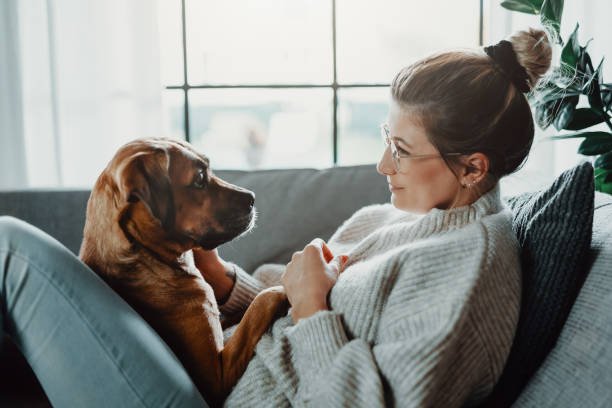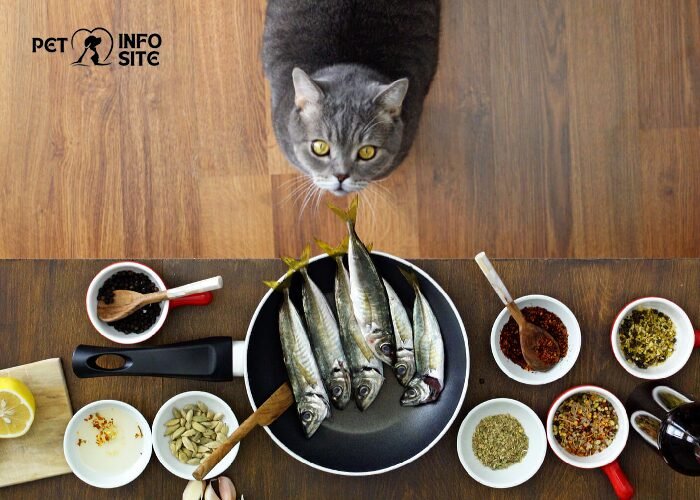The Complete Guide to Keeping Your Canines Off the Couch: “Mastering Equilibrium”
Imagine returning home on your cozy couch to unwind after a hard day. Only to discover that your pet has already made it to the seat of power. Dogs off the couch provide countless hours of love and company. Even so, keeping them off couches remains a common challenge for pet owners.
The conflict between your four-legged friend. And yet, a comfortable couch doesn’t need to last forever. We’ll look at practical methods in this extensive tutorial to address this. The common query is, “How do I keep my dogs off the couch?”
Developing an effective preventive strategy requires an understanding of the reasons why dogs initially draw toward the couch. Canine feelings, comfort-seeking habits, and a need to stay near their human group often impact their behavior.
We who are responsible pet owners must understand the triggers that push our furry friends to the couch. This requires delving into their minds. Understanding these cues allows us to modify our strategy to prevent undesirable behavior while maintaining our dogs’ happiness and fulfillment.
Numerous pet owners attest to the reality of the struggle. Telling tales of their treasured animals. Curled up peacefully between the couch cushions. Imagine your aggravation when you keep discovering traces of your dog. Pleasant adventures from missing fur. To the subtle scent of companionship in your home.
Recognizing Your Dog’s Behavior: An In-Depth Look into Dog Couch Comfort

Identifying the Need to Curl Up on the Couch:
Dogs off the couch owners frequently get confused by their furry companions’ attraction to the couch. Acknowledging dogs’ inherent tendency to curl up on the couch is the first step towards changing this behavior.
Dogs constitute pack animals, and they feel safest and most at ease when they are with their human group members. This understanding is essential to creating a plan. That strikes a balance between their demand for connection. And the requirement to keep furniture limited.
Examine your dog’s behavior and facial expressions to determine this desire. If they often find themselves drawn to the couch. Cuddling into its cushions, or putting their hungry. Head on the armrest, take note of this.
By identifying these tiny signs. You can take preventive steps to resolve the issue. And divert their focus to more appropriate options.
Determining Couch Behavior Triggers:
To effectively stop your dog from jumping onto the couch, you must identify the triggers that cause this behavior. Dogs might have different triggers depending on their circumstances, emotions, or surroundings.
Emotional triggers include anxiety, tension, and the need for warmth and comfort; environmental triggers include things like a loved one’s fragrance on the couch.
Pay attention to the situations that lead to your dog’s couch adventures. Would it be during a storm, when they might look for comfort? Or maybe they want to talk about their after-workout relaxation moments with you after a walk?
Recognizing these triggers, you can modify your strategy to deal. With the underlying issue and improve the success. And compassion for the training process.
By solving the puzzle of your dog’s sofa preference, you create the groundwork for a focused and empathetic approach.
Acknowledging their need and figuring out what makes them happy. You can deal with this sort of conduct and create a space where you. And your dog may live together in harmony.
Developing Cozy Substitutes: A Dog Haven Outside the Couch
Supplying a warm dog blanket or bed:
Providing your dog with a cozy and attractive substitute. Is one of the best methods to prevent them. From snatching the couch for themselves.
Invest in a cozy dog bed or silky blanket that is only used by them. A comfortable corner of the area is where you should put it; make sure it is well-padded and away from busy areas.
Because dogs tend to gravitate to warm, soft surfaces. Choosing a bed made of materials that resemble. Your couch’s feel can be particularly tempting.
Put something you’ve recently donned on the bed. To provide them with a familiar smell. And help them get used to their new sleeping area.
This not only gives your pet a comfortable haven. But it also helps them form a good association with their place.
Showcasing Furniture That Is Specially Made for Dogs:
Adding dog-friendly furniture to your home is a proactive way to satisfy your pet’s need for coziness and proximity. Think about investing in sofas or chairs made of sturdy, easily cleaned materials that are pet-friendly.
These specialty items frequently have washable and detachable covers, which makes them a sensible option for homes with dogs off the couch.
As an alternative, look into chic dog-friendly couch covers. That will shield your current couch. While also giving your pooch a special place to hang out.
These blankets, meet your dog’s desire for a cozy. Comfortable seats frequently come in a variety of colors. And designs that go in perfectly with your décor.
By presenting these options, you establish a win-win scenario. That guarantees your dog’s happiness without jeopardizing it. The structural strength of your furniture.
By choosing these substitutes, you give your dogs off the couch a comfortable haven. While at the same actively encouraging them. To avoid the couch.
A designated dog bed or blanket combined with furniture. That is suitable for dogs creates a space. Where your dog can unwind and feel safe. Which eventually promotes a peaceful coexistence between pets.
Education and Positive Reinforcement: Using Dog Commands to Develop Couch Manners
Teaching fundamental instructions such as “Stay” and “Off”:
The secret to teaching your dog appropriate behavior is effective communication. Teaching your dog simple instructions like “off” and “stay” gives you the authority to establish boundaries and expectations for their behavior when they’re on the couch.
To correlate the commands with particular actions, begin with brief but regular training sessions that use positive reinforcement.
To use the order “off,” gently nudge your dog toward the couch. Give them goodies and heartfelt praise when they cooperate. To strengthen the link between the instruction and the intended behavior, it is important to be consistent; and repeat the training regularly.
Your dog will eventually get adept at responding quickly, which will make the space more couch-friendly.
Giving Recognition and Treats for Good Behavior:
Using positive reinforcement to train your dog is a great way to control their behavior. Give your pet snacks and singing praise as soon as they exhibit the desired behavior, such as remaining off the couch or obeying directions.
Positive reinforcement produces a positive reinforcement loop, and dogs thrive on receiving praise. Make sure the goodies you select are really tasty for your dog and save them for training.
A delicious reward and spoken reinforcement work together to establish a strong link between the desired conduct and the desired result.
If you consistently provide reinforcement, your dog will eventually by choice choose to obey your directions, encouraging a couch-free living environment through pleasurable and constructive interactions.
Creating a No-Couch Area with Pet-Friendly Strategies by Using Barriers
Using Sprays for Pets on the Couch:
Pet-friendly sprays might be a useful tool in the fight to get your dog off the couch. Dogs are effectively discouraged from visiting the treated location by the unpleasant fragrances that these carefully prepared sprays create.
Select a spray that won’t injure your pet or deteriorate your furniture by choosing ingredients that are safe and harmless.
Apply a liberal amount of the sprayer on the parts of the couch that your dog usually targets when using it. By gradually teaching your dog to identify the sofa with a bad experience, the fragrance will serve as a deterrent.
Reapplying the spray frequently is crucial, particularly after cleanliness or if the aroma fades with time. Your dog will eventually learn to recognize the treated regions as off-limits and establish a firm barrier.
Using Aluminum Foil or Double-Sided Tape as Motivators:
A further useful tactic for establishing a no-couch zone is to use tactile deterrents like aluminum foil or double-sided tape.
Double-sided tape tends to stick to dogs’ paws and makes an unpleasant noise when walked on, therefore they usually don’t enjoy it.
By carefully positioning these barriers on the couch, you may make your dog’s experience uncomfortable without endangering it.
Put some double-sided tape over the couch cushion’s edges or any other areas that your dog likes to chew on. As an alternative, place aluminum foil sheets over the cushions. Your dog won’t leap onto the couch because of the surprising texture and sensations.
Your dog will eventually seek out other welcoming and comfy options since they will come to connect the couch with these unpleasant encounters.
By including these deterrents in your plan, you provide your dog with a concrete reminder that the couch is prohibited.
You can create a defined barrier during the training process while guaranteeing your dog’s health and safety by using pet-friendly spraying, double-sided tape, or foil with aluminum.
Setting Uniform Limits: Developing a Couch Protocol for Dog Peace
Determining Couch Access Regulations:
Establishing obvious and regular guidelines for your dog’s utilization of the couch is essential to creating a peaceful living environment.
Dogs learn best when things are clear and predictable, so setting clear rules for conduct helps them grasp what is expected of them.
Make it clear if there are any restrictions, like using a specific blanket or obtaining permission before participating, or if the couch is completely off-limits.
Enforcing these guidelines requires consistency. Giving your dog conflicting messages might confuse you, so try to avoid doing so.
Make sure your dog knows the rules around couch access, whether you use hand signals, vocal orders, or any combination of the two.
You may create the groundwork for a respectful and happy connection with your pet by creating a disciplined atmosphere.
Applying Uniform Punishment for Violations of the Rules:
Ensuring that there are uniform penalties for breaking the rules is just as crucial as establishing them. Dogs are association learners, thus associating an action with a reward system serves to reinforce a desirable habit.
Give your dogs off the couch a stern but gentle correction if they try to go on the couch without your permission. A few examples of consequences are guiding them to their allotted location, focusing on something else for a short while, or giving a calm, firm order like “off.”
It’s critical to enforce penalties as soon as the undesirable behavior starts so that your dog can learn to associate the behavior with its outcome. With constant practice, your dog will eventually learn the rules and punishments and help create a respectful, mutually understood, couch-free home.
Your best partners in striking the right balance when it comes to setting boundaries are consistency and clarity. You may establish a regulated atmosphere that encourages good behavior and strengthens the bond between you and your dog by outlining the rules for sofa access and imposing consistent consequences for destroying them.
Frequent Exercise and Mental Reward: Promoting a Well-Balanced Dog Lifestyle
Making Sure Your Dog Gets Sufficient Exercise:
A happy, well-mannered dog is usually one that gets plenty of exercise. Frequent exercise benefits your dog’s general health and is essential for controlling their behavior, which includes their love of exploring the couch.
To help your dog burn off extra energy and lessen the chance of him looking for the sofa out of restlessness or pent-up energy, try to take your dog for daily walks, playdates, or runs.
Take your dog on activities appropriate to his breed, age, and personal preferences. Adapting the exercise regimen to your dog’s demands, whether it be a game of catch or an exciting excursion, can guarantee that they are physically content and less likely to transform the couch into their favorite spot.
Offering Games and Toys That Stimulate the Mind:
Mental stimulation is just as vital as physical exercise in stopping undesirable behaviors. Invest in a range of games and toys that stimulate the mind to keep your dog’s mind engaged and active.
Collaborative games, puzzle toys, and treat-dispensing devices offer mental obstacles that can be just as exhausting as physical ones.
To keep things fresh and keep kids from getting bored, replace these toys frequently. When their minds are engaged, dogs are less willing to look for other entertainment options like the couch.
You can lessen their desire for them to climb on the furniture and improve their general well-being by keeping their brains busy.
Getting Expert Assistance: Leading Your Dog with Skill
Seeking Advice from a Certified Dog Instructor:
Sometimes the skills of a qualified dog trainer are necessary to overcome behavioral issues. Consulting a professional dog trainer can offer insightful advice and tailored tactics if you’re unable to keep the pet off the couch.
A trainer can evaluate your dog’s behavior, spot underlying problems, and collaborate with you to put training methods into practice.
Expert trainers can teach you effective communication techniques with your dog in addition to having a thorough understanding of canine behavior.
An expert trainer can be an invaluable ally in creating a couch-free environment, whether the goal is to treat particular behavioral issues or reinforce basic directions.
Examining Workshops or Classes on Training for Your Dog:
Look into enrolling your dog in workshops or behavioral lessons for a more thorough approach to managing their behavior. In addition to providing your dog with training, these organized sessions give them the chance to socialize and be exposed to a variety of stimuli under supervision.
When it comes to dealing with particular issues like anxiety during separation or territorial behavior, behavioral classes are especially helpful.
Both you and your canine companion can gain useful skills and strategies to deal with typical behavioral problems by attending these workshops.
Positive behavior reinforcement is encouraged in this controlled setting with the help of knowledgeable trainers, which promotes a more harmonic and balanced relationship between you and your pet.
By combining consistent exercise, cerebral stimulation, and expert advice, you start to train your dog’s behavior completely. By attending to your dog’s physical and emotional requirements, you can prevent accidents on the couch and raise a contented, balanced dog friend.
Setting Up Furniture Barriers to Create Dog-Friendly Areas in Your House
Pet barriers as a means of limiting access
Pet gates are useful tools for dividing up your house into defined regions and keeping your dog out of places like the couch in the living room.
To limit access and make sure your pet is aware of the boundaries, carefully position pet gates at the entrances. Select gates that are strong, simple to erect, and sufficiently high to deter jumping.
Gradually present the idea so that your dog may become used to the new limits. Your dog will eventually learn to respect the boundaries created by the barriers if you provide them with beneficial reinforcement when they obey the gate.
This is an easy approach to prevent your dog from going near the prized couch.
Trying Coverings or Covers for Furniture:
Using covers or slipcovers to protect the furniture not only preserves the upholstery but also acts as a physical barrier for your dog.
Choose coverings that are strong and simple to clean so they can survive the abrasions of your prospective dog companions. Your dog might be deterred from attempting to jump onto the furniture by the tactile difference.
Select covers that go well with your décor and give another line of protection against spills, scratches, and pet hair.
To keep this tactic working and guarantee that the covers stay on and become a permanent feature of the couch countryside, regularity is essential.
Conclusion
The secret to successfully keeping our cherished canines off the couch is a comprehensive strategy based on knowledge, handling the environment, and training.
Through an exploration of the subtleties of dog behavior, we can determine the reasons for our furry friends’ sofa conquests and develop more focused interventions.
Every tactic adds to a holistic plan for puppy harmony, from providing comfortable alternatives and using deterrents to setting constant boundaries and including frequent exercise.
With the help of training and reinforcement strategies, we can effectively mold desired behavior in our dogs by teaching them basic commands and rewarding excellent behavior with affection and treats.
By using deterrents, which may be anything from double-sided glue to pet-friendly sprays, you can add a layer of concrete direction and reduce the attractiveness of the couch.
Maintaining consistency is crucial when it comes to giving enough opportunity for mental and physical stimulation, as well as when it comes to imposing rules and punishments.
We create an atmosphere where inviting alternatives to the couch outweigh the couch’s attractiveness by being aware of and responsive to our dogs’ needs.
FAQs
What makes dogs adore couches so much?
Because of their pack tendencies and want to be near their human relatives, dogs tend to gravitate to couches. The couch offers a cozy and elevated area that responds to their natural feelings for warmth and security.
How can I stop my dog from climbing on the couch at all times?
The key to successfully educating your pet to avoid utilizing the sofa is to use barriers, systems of incentives, behavior analysis, and appealing alternates. A successful technique also requires training, consistency, and the establishment of a no-dog area.
Are sprays meant for pets acceptable for my dog to use?
Sprays intended for pets are indeed made especially to be acceptable for dogs off the couch. Dogs are usually put off from visiting the treated area by the natural scents used in these sprays. Make sure the products are non-toxic and pet-safe by always reading the labels.
How frequently should I give my dog training cues to ensure that they stay off the couch?
Reinforcing training instructions requires consistency. To keep a strong connection between the orders and the intended behavior, brief, frequent training sessions centered on commands such as “off” or “stay” have to be held. Reward good behavior with treats and compliments.







